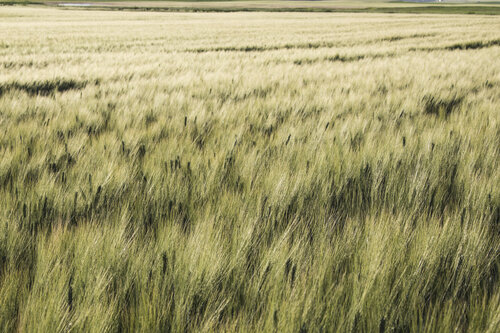Development of Spring Wheat Varieties to Enhance Profitability for Producers in Quebec and Eastern Canada

Spring wheat accounts for about 90% of the wheat grown in Quebec—half is milling wheat, the other half is feed wheat. Unlike other regions of Canada, the feed wheat market is very important in Quebec, explains Silvia Barcellos Rosa, wheat breeder, Centre de recherche sur les grains (CÉROM).
She says growing conditions in Quebec are not as well suited to producing quality wheat as those in the Prairies. Canada eastern red spring wheat often has lower protein content and gluten strength than Canadian western red spring wheat grown in the Prairies. While it’s reasonable to assume this quality difference is mainly due to environment, wheat breeders developing new varieties for Eastern Canada are selecting for traits that will improve bread-making qualities.
The price of feed wheat in Quebec is similar to the price of milling wheat, but producers grow feed wheat because they can get a higher yield. “Local millers want to use more wheat from Quebec,” Rosa says, “but there’s not enough good-quality wheat grown here. If we can improve the quality, farmers will benefit from higher prices and better local markets.”
Eastern farms are also more likely to be affected by Fusarium head blight (FHB), a fungal disease that can significantly reduce yield and produce mycotoxins. Rosa acknowledges that FHB resistance is important everywhere, but she says “it’s especially so in Quebec because of climate conditions. A variety with good resistance to FHB would have a huge impact for Eastern producers.”
Rosa is using new breeding technologies to develop varieties with higher yield, improved quality, and more disease resistance, especially to FHB. For example, her program has built an indoor quality lab. “We can now select for quality indoors, which is something we were missing in the past,” she says.
She is also using speed breeding to develop advanced lines and get them to market as quickly as possible. When you’re growing outdoors in Canada, you can only grow one generation per year in the field. Rosa is using indoor growth chambers with 22 hours of light to grow four generations per year.
“The idea is to advance the lines indoors until they’re genetically stable, then select in the field,” she explains. “We’re not jumping the selection stage, but we’re selecting later.”
She’s also employing marker-assisted selection to identify desirable traits. She screens for genetic markers on DNA samples in early generations to identify plants that have the traits she’s looking for. This lets her direct her efforts to plants/lines with higher potential, which reduces the cost of field experiments later in the breeding process.
She’s also trying to identify genes that will help new varieties be more resilient to climate extremes. “The idea is to identify genetic regions that are related to broad adaptability,” she explains.
Climate change is a big concern. “We need to focus on material that can better tolerate abiotic stresses like high temperatures and dry conditions,” she says. “We’re going to evaluate cultures from all over the Americas and have trials in Brazil, Paraguay, Uruguay, and Quebec to try to identify lines that have broad adaptability and good resilience. We can then use those materials in crosses to develop new cultures that can better adapt to climate change.”
This Wheat Cluster project received funding from Agriculture and Agri-Food Canada through the AgriScience Program, which is part of the Canadian Agricultural Partnership, a federal, provincial, territorial initiative. This project also received funding from Producteurs de grains du Québec and SeCan. Rosa is using the funding to develop spring wheat varieties for Eastern Canada that will have higher yield and better quality for the milling industry, be resistant to major diseases, contribute to environmental sustainability, and, ultimately, increase profitability for producers.
To read the project profile, CLICK HERE.